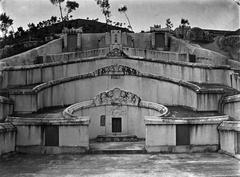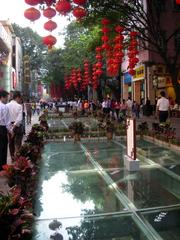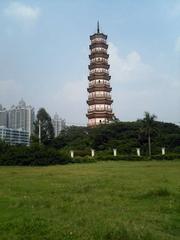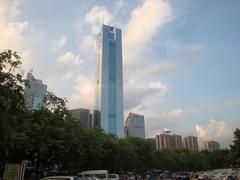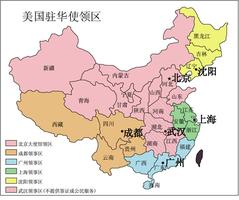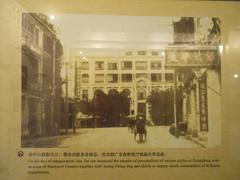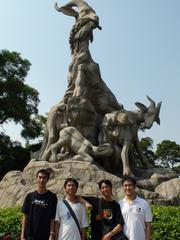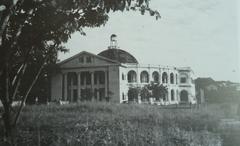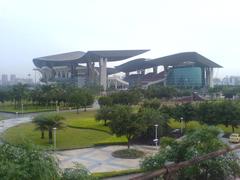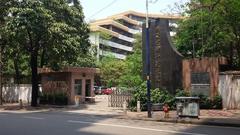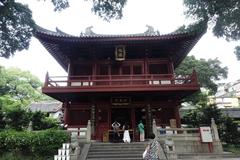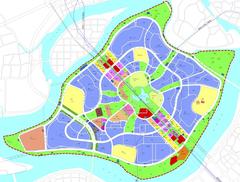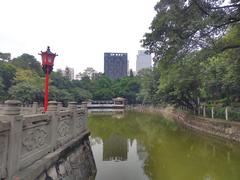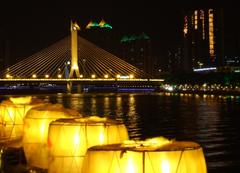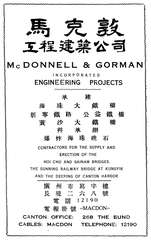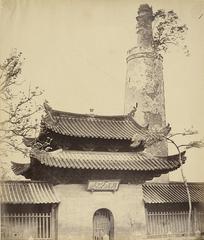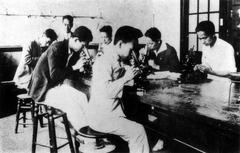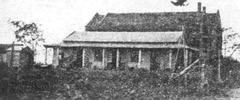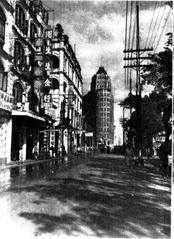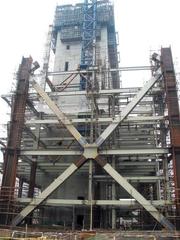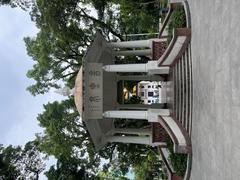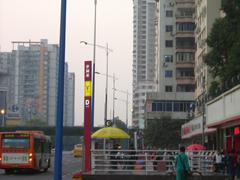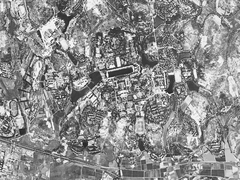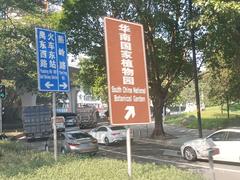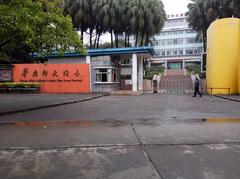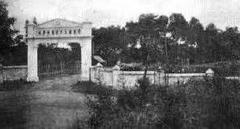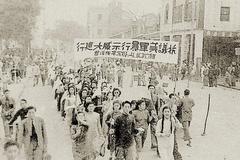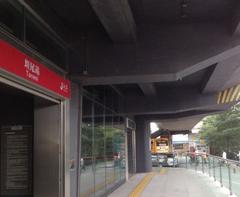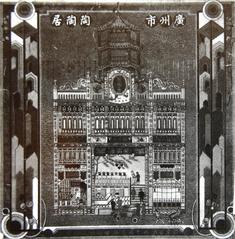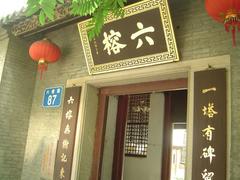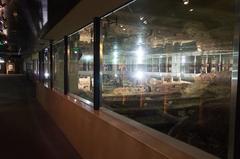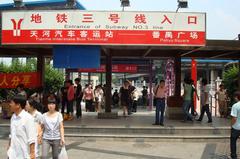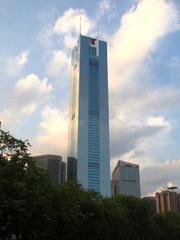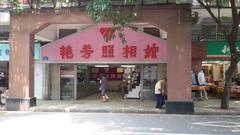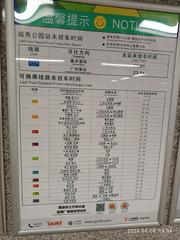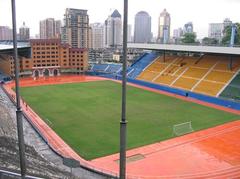Complete Guide to Visiting Hanxingzhong Street, Guangzhou, China
Date: 25/07/2024
Introduction
Nestled in the vibrant city of Guangzhou, 汉兴中街 (Hanxing Zhongjie) stands as a compelling destination that offers a rich blend of historical and cultural experiences. This historic street is a microcosm of Guangzhou’s extensive history, dating back over two millennia to the Qin Dynasty when the region was first incorporated into the Nanhai Shire. Over centuries, it has evolved into a vital hub of commerce and culture, particularly flourishing as a key port during the Han Dynasty and the Tang Dynasty (Travel China Guide). Today, 汉兴中街 is celebrated for its architectural marvels, such as the traditional Lingnan-style buildings and the Chen Clan Ancestral Hall, which encapsulate the intricate craftsmanship of past eras (China Highlights). This guide aims to provide an in-depth exploration of 汉兴中街, covering its historical significance, visitor information, and travel tips to help you make the most of your visit.
Table of Contents
- Introduction
- Historical Background and Significance
- Notable Historical Sites
- Economic Significance
- Cultural Fusion and Modern Attractions
- Visitor Information
- Special Events and Guided Tours
- Photographic Spots
- Visitor Tips
- FAQ
- Conclusion
Historical Background and Significance
Ancient Origins and Development
汉兴中街, located in Guangzhou, has a rich historical tapestry that dates back over two millennia. The area, part of the larger Guangzhou city, was initially established during the Qin Dynasty (221BC - 206BC) when the region was conquered and incorporated into the Nanhai Shire. This early establishment laid the groundwork for Guangzhou’s development as a significant urban center (Travel China Guide).
During the Han Dynasty (206BC-220AD), Guangzhou, then known as Fanyu, became a vital port for commerce and foreign exchange. The city’s advanced textile and porcelain industries flourished, making it a hub for international trade. This period marked the beginning of Guangzhou’s prominence on the global stage, particularly as a main port of the Maritime Silk Road (Travel China Guide).
The Tang Dynasty and the Maritime Silk Road
The Tang Dynasty (618-907) saw Guangzhou ascend to even greater heights as a world-renowned trading harbor. The establishment of China’s earliest customs office in Guangzhou during this period underscored its importance in international trade. The city became the largest commercial city and treaty port in China, facilitating extensive trade with countries in the South Pacific and Indian Oceans (Travel China Guide).
Song to Yuan Dynasties - A Period of Transition
From the late Song to Yuan Dynasties (1279 - 1368), Guangzhou experienced a period of transition. Although it was overshadowed by Quanzhou as the main port, Guangzhou managed to recover and maintain its status as a significant trading hub. This resilience was particularly evident during the Qing Dynasty (1644-1911), when Guangzhou was the only open port under China’s isolationist policies (Travel China Guide).
Modernization and Expansion
The 1920s and 1930s were transformative years for Guangzhou. A vigorous modernization program was implemented, which included the construction of wide streets, modern sewers, and arcades for sidewalk shops. This period also saw the creation of numerous parks and the expansion of the city southward to its present waterfront along the Pearl River (Britannica).
Cultural and Architectural Heritage
汉兴中街 is a microcosm of Guangzhou’s rich cultural and architectural heritage. The area is renowned for its “qilou” or arcade-style houses and shops, which are emblematic of old Guangzhou. These structures, along with Cantonese Opera guild halls and ancient storefronts, offer a glimpse into the city’s historical and cultural past (The China Guide).
Notable Historical Sites
Several historical sites in and around 汉兴中街 highlight Guangzhou’s storied past. The Huaisheng Mosque, built in 627 CE, is considered the oldest mosque in China and stands as a testament to the city’s long-standing multicultural interactions (Britannica). Additionally, the Chen Clan Ancestral Hall, a magnificent representation of traditional Cantonese architecture from the Qing Dynasty, showcases intricate designs and ancient construction methods (China Highlights).
Economic Significance
Guangzhou’s economic significance is underscored by its role as the host of the China Import and Export Fair, commonly known as the Canton Fair. Held twice a year since 1957, this event is the largest trade fair in China and attracts hundreds of thousands of visitors from around the world. The fair’s exhibitions cover a wide range of industries, including electronics, machinery, and textiles, highlighting Guangzhou’s pivotal role in global trade (Travel China Guide).
Cultural Fusion and Modern Attractions
汉兴中街 and its surrounding areas are a testament to Guangzhou’s cultural fusion. The city’s colonial history has brought a blend of overseas cultures, which have merged with local traditions. This is evident in the well-preserved historical buildings and old streets in traditional Chinese style, as well as British and French architectures on Shamian Island (China Highlights).
Modern attractions such as the Canton Tower, the tallest structure in Guangzhou, offer a stark contrast to the historical sites. The tower’s viewing platform provides breathtaking panoramas of the city, and its nightly light displays have become a symbol of modern Guangzhou (Lonely Planet).
Visitor Information
Visiting Hours and Tickets
汉兴中街 is open to visitors year-round. There are no specific visiting hours for the street itself, as it is a public area. However, individual attractions such as the Chen Clan Ancestral Hall and Huaisheng Mosque may have specific opening hours and ticket prices. It is advisable to check the official websites or contact the attractions directly for the most current information.
Best Times to Visit
The best times to visit 汉兴中街 are during the spring (March to May) and autumn (September to November) when the weather is pleasant. Avoid visiting during major Chinese holidays like the Lunar New Year and National Day to steer clear of large crowds.
Accessibility
汉兴中街 is accessible by public transport, including buses and the Guangzhou metro. The area is pedestrian-friendly, but some parts may have uneven surfaces, so comfortable walking shoes are recommended.
Special Events and Guided Tours
汉兴中街 occasionally hosts cultural festivals and events that showcase traditional Cantonese culture. Guided tours are available and can provide a deeper understanding of the area’s historical and cultural significance. Check with local tour operators for more information.
Photographic Spots
For photography enthusiasts, 汉兴中街 offers numerous picturesque spots. The quaint qilou buildings, vibrant street life, and historical landmarks make for excellent photo opportunities.
Visitor Tips
For visitors to 汉兴中街, a walk along En Ning Road and Shangxiajiu Pedestrian Street is highly recommended. These areas feature some of the best surviving architecture of old Guangzhou and offer unique souvenir shopping opportunities (The China Guide). Additionally, exploring the Qingping Chinese Medicine Market in the Liwan district provides an authentic experience of traditional Cantonese culture (Lonely Planet).
FAQ
Q: What are the visiting hours for 汉兴中街? A: 汉兴中街 is open year-round. As it is a public area, there are no specific visiting hours, but individual attractions may have their own schedules.
Q: Are there any entrance fees for 汉兴中街? A: There are no entrance fees for 汉兴中街 itself. However, specific attractions like the Chen Clan Ancestral Hall may charge an entry fee.
Q: What is the best way to get to 汉兴中街? A: 汉兴中街 is easily accessible by public transport, including buses and the Guangzhou metro.
Q: When is the best time to visit 汉兴中街? A: The best times to visit are during spring (March to May) and autumn (September to November) when the weather is pleasant.
Q: Are there any guided tours available? A: Yes, guided tours are available and can provide a deeper understanding of the historical and cultural significance of 汉兴中街.
Conclusion
汉兴中街 in Guangzhou is not just a street but a vibrant tapestry of history, culture, and modernity. From its ancient origins as a critical port on the Maritime Silk Road to its current status as a bustling urban center, this area encapsulates the dynamic spirit of Guangzhou. Visitors can immerse themselves in the city’s rich history, marvel at the architectural wonders, and experience the unique cultural fusion that defines this remarkable city (Britannica). Whether you are exploring the historical Chen Clan Ancestral Hall or enjoying the modern attractions like the Canton Tower, 汉兴中街 offers something for everyone. This guide has provided you with comprehensive information to ensure a memorable and enriching experience. Don’t forget to check local event calendars for cultural festivals and guided tours to deepen your understanding of this fascinating destination. For more travel tips and updates, follow us on social media and download the Audiala app.
